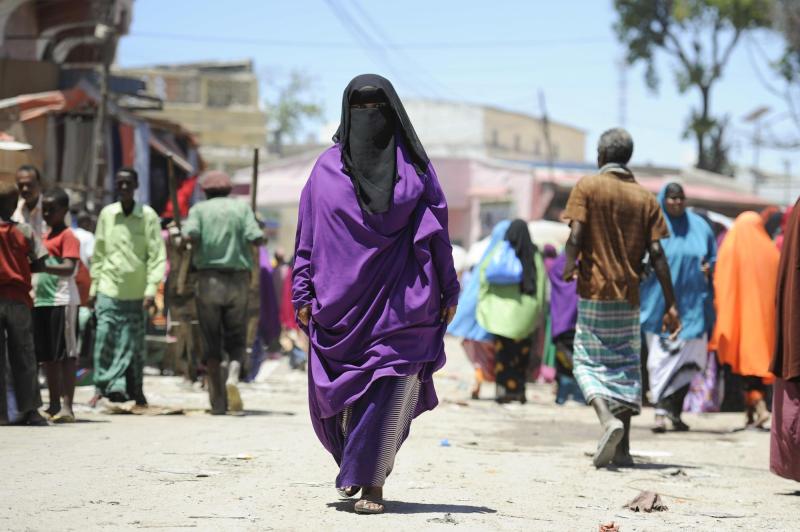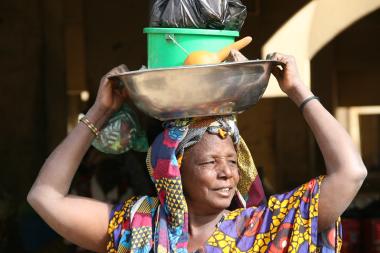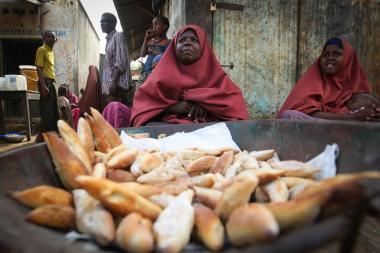Blog
Why we urgently need to fund climate adaptation in fragile- and conflict-affected countries like Somalia
For far too long countries affected by fragility and conflict, like Somalia, have faced obstacles when accessing climate finance. Here our experts share insight into what needs to change and why.
Publisher SPARC
As the second most climate-vulnerable country in the world and an ‘extremely fragile’ country, Somalia is a microcosm of the challenges created by climate change. The frequency of climate-related hazards has tripled since 1990 compared to 1970–1990. During the 2011 drought, over a quarter of a million people died of hunger – half of whom were children. The international community vowed it would not let that happen again. However, after five consecutive failed rainy seasons, Somalia faces its worst drought-induced famine yet, with over 213,000 people at high risk of famine and 513,000 children at risk of death. Climate change adaptation is more urgent than ever.
Financing adaptation is estimated to require US$48.5 billion between now and 2030; more than six times Somalia’s 2022 GDP. Yet, Somalia ranks 71 out of 79 low to lower-middle-income countries in terms of funding approved by multilateral climate funds. The country has been almost entirely dependent on funding provided by bilateral donors. Total adaptation finance per capita received until 2020 stood at a low US$87. SPARC research has found that the more fragile a country is, the less adaptation finance it receives. Somalia exemplifies this – currently, climate finance is failing to reach many of the people who need it most.
Most finance to build resilience is currently accessed through short-term humanitarian relief, but this is unsustainable. Without focus on building long-term adaptation to climate-related shocks and stresses, the cost of recurrent and protracted humanitarian crises will only increase – Somalia’s humanitarian appeal more than doubled from 2021 to 2022, from US$1.09 billion to US$2.27 billion.
Accessing climate adaptation finance in Somalia
Barriers to access abound. Literature and interviews emphasise governance obstacles, particularly the weak institutional apparatus and institutional vacuum that has characterised the country and limited institutional capacity to drive the climate change agenda.
Currently, the modalities of accessing finance are complex and rigid and don’t account for the changing landscape of crises and fragility. For countries like Somalia, the average timeframe from concept to receiving funding is over five years. There is no incentive for political decision makers to invest domestic resources or political capital in funding proposals without a guarantee of success. This lack of flexibility in financing is a key barrier to funding community-led warning and anticipatory action in Somalia.
Nevertheless, the enabling environment for mobilising climate finance is improving. The policy frameworks for climate change adaptation, including the National Climate Change Policy and the 2021 Nationally Determine Contributions to the Paris Agreement define not only the priorities for climate change adaptation but also the institutional arrangements for addressing climate change.
What climate finance providers and donors must do
Climate finance providers and donors need to review the risks of not investing in climate change adaptation. The costs of inaction are high, whereas the dividends from investing in climate adaptation and building resilience to climate change are attractive. Doing so would reduce disaster losses and the need for humanitarian aid and would foster wider social economic development. There are several quick wins. Incorporating conflict sensitivity into climate programming is an obvious one.
Rather than misdirecting funds to ‘low-risk’ regions, SPARC evidence shows that donors must take a more risk-informed approach to financing adaptation and increase their understanding of the multiple threats the country faces. This also means greater co-ordination across climate adaptation, humanitarian, and peacebuilding support, and embedding climate expertise within the humanitarian and conflict management programme teams in donor organisations and vice-versa. Local leaders and key local stakeholders must be involved in programme design and implementation, using inclusive approaches that recognise and value the heterogeneity of communities where finance is most needed.
Multilateral climate funds also need to adapt access requirements and safeguards to the needs and circumstances of fragile and conflict-affected settings. For starters, the fiduciary and organisational requirements for small-scale, local-level adaptation projects could be made proportionate to the smaller envelopes of funding that these projects require. Then a dedicated financial mechanism with access and resource allocation criteria that is simplified or fit for contexts of conflict would greatly increase Somalia’s ability to access funding for adaptation programming. Finally, specialised windows could be created to allow local actors to independently access finance.
We will be sharing our research on how climate finance architecture in fragile- and conflict-affected states can be transformed at a series of COP27 events. Find out more here.

Residents of Mogadishu prepare for Eid
Credit Image by Tobin Jones/ UN - CC BY-NC-ND 2.0


